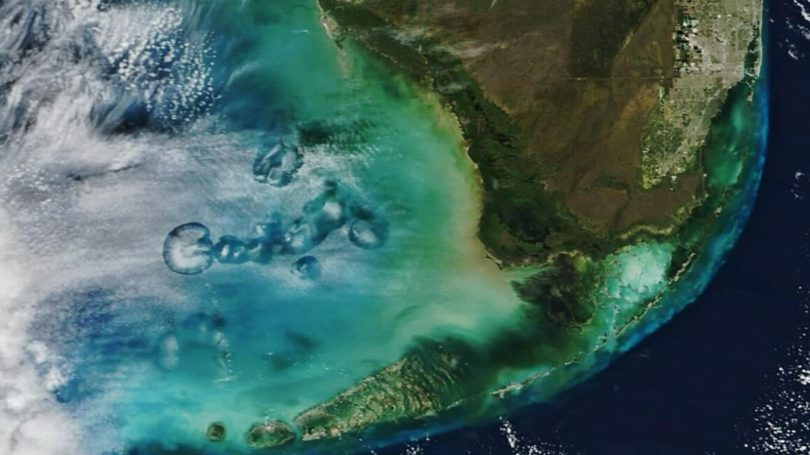[ad_1]
In its latest Instagram post, the National Aeronautics and Space Administration (NASA) shared a photograph showing what are seen as ‘odd holes’ in the clouds above the Gulf of Mexico and off the coast of Florida.

In the picture captured by the space agency’s Terra satellite on January 30 of this year, ice crystals falling at the centre of the holes appear as delicate streaks of precipitation that never reach the ground. These are known as ‘virga’, resembling rain or snowfall from clouds but evaporating before reaching the surface.
NASA further said that scientists have long speculated about these clouds, referred to as “cavum clouds,” also known as “hole-punch clouds or fallstreak holes,” and that these are “caused by aeroplanes.”
How are Cavum clouds formed?
NASA said that ‘Cavum clouds’ form when aeroplanes pass through layers of altocumulus clouds, which are mid-level clouds containing supercooled water droplets (water below freezing temperature but still in liquid form). As the aircraft moves through, a process known as adiabatic expansion can cause the water droplets to freeze into ice crystals. These ice crystals eventually become too heavy and fall out of the cloud layer, creating a hole in the clouds.
According to a report by Fox News, research on these “mysterious clouds” has been ongoing for over 13 years. They are attributed to aeroplanes moving through altocumulus cloud banks, as stated by NASA, referencing a study published in 2010 and 2011 led by scientists from the University Corporation for Atmospheric Research (UCAR).
Researchers at UCAR made the discovery that various types of aircraft, including large passenger jets, regional jets, private jets, military jets, and turboprops, could generate either cavum or canal clouds when passing through clouds. Cavum clouds form when planes pass through at a relatively steep angle, while canal clouds, characterised by long virga trails, occur when planes pass through at a shallower angle.
NASA describes the image
NASA, alongside the shared image, gave the description saying, “Satellite image of Cavum clouds over the Gulf of Mexico off of Florida’s west coast on January 30, 2024. Wisps of white clouds on the left side of the image. There are holes in the clouds in some areas, exposing the blue and turquoise ocean water underneath. In the center of the holes are wisps of white that are the virga. On the right side of the image, the green land of southern Florida is visible on the right of the image and the Florida Keys curve toward the bottom of the image.”
[ad_2]
Source link








